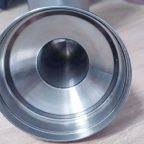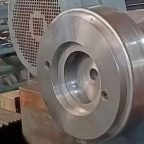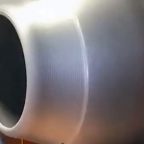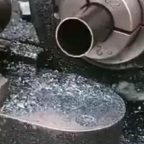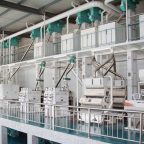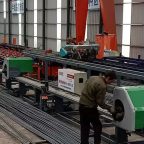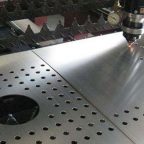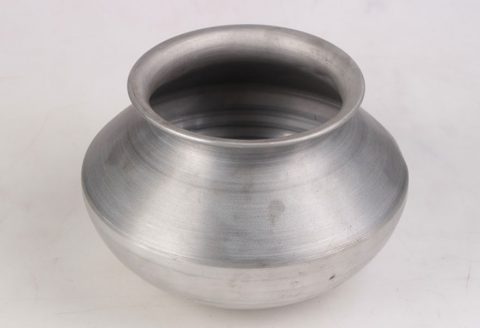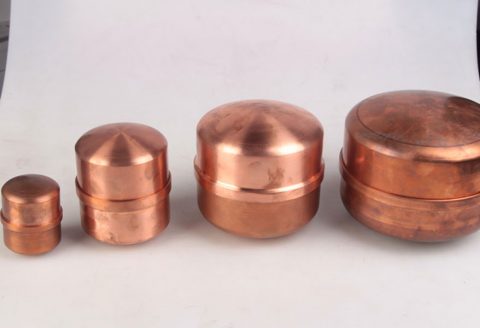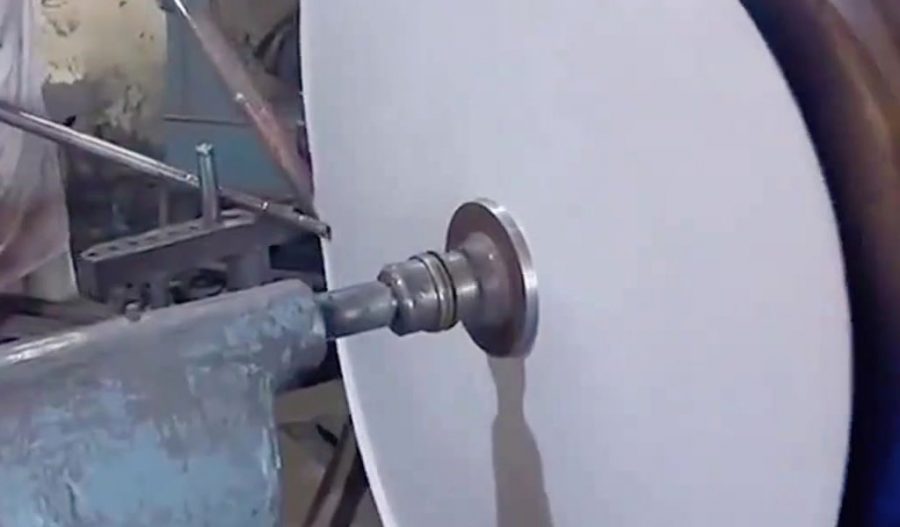
The origins of metal spinning can be traced back to ancient civilizations, where artisans used rudimentary tools to shape metals into vessels and decorative items. However, its adoption in marine engineering began in earnest during the Industrial Revolution, when advancements in machinery enabled precise control over rotational speeds and forming pressures. By the late 19th century, spinning was employed to fabricate components for steamships, such as boiler fittings and propeller hubs, which required uniform thickness and structural integrity.
In the 20th century, the advent of computer numerical control (CNC) spinning machines revolutionized the process, allowing for greater precision and repeatability. This was particularly significant in marine engineering, where components like propeller blades, sonar domes, and pressure hulls demanded exacting tolerances to withstand harsh oceanic environments. The transition from manual to automated spinning also facilitated the production of complex geometries, reducing material waste and production costs.
Today, spinning is integral to the marine industry, with applications ranging from small-scale fittings to large structural components. Its evolution reflects a convergence of traditional craftsmanship and cutting-edge technology, driven by the need for efficiency, reliability, and sustainability in marine systems.
Principles of Metal Spinning in Marine Engineering
Metal spinning operates on the principle of plastic deformation, where a flat metal disc or tube, known as a blank, is rotated at high speeds on a lathe while a forming tool applies pressure to shape it against a mandrel. The process can be categorized into two main types: conventional spinning and shear spinning. Conventional spinning maintains the blank’s original thickness, while shear spinning reduces thickness to achieve deeper draws and more complex shapes.
In marine engineering, spinning is valued for its ability to produce seamless components with minimal joints, which are potential points of failure in corrosive marine environments. The process is typically performed using CNC machines, which allow for precise control over tool paths, rotational speeds, and forming pressures. This ensures uniformity in wall thickness and surface finish, critical for components exposed to hydrodynamic forces and saltwater corrosion.
The spinning process begins with the selection of a suitable blank material, typically a metal or alloy with high ductility, such as aluminum, stainless steel, or titanium. The blank is clamped to a rotating mandrel, and the forming tool, guided by CNC programming, gradually shapes the material. The process may involve multiple passes to achieve the desired geometry, with intermediate annealing steps to relieve stresses and enhance formability.
Advantages of Spinning in Marine Applications
Spinning offers several advantages that make it well-suited for marine engineering:
- Seamless Construction: Spun components lack welds or joints, reducing the risk of corrosion and structural failure.
- Material Efficiency: The process minimizes waste by forming parts from a single blank, aligning with sustainable manufacturing practices.
- Versatility: Spinning can produce a wide range of shapes, from simple cones to complex parabolic or hemispherical structures.
- Cost-Effectiveness: For low to medium production volumes, spinning is more economical than casting or forging, as it requires less tooling.
- High Strength-to-Weight Ratio: Spun components often exhibit enhanced mechanical properties due to work hardening during deformation.
Limitations and Challenges
Despite its advantages, spinning has limitations that must be addressed in marine applications:
- Material Constraints: Not all alloys are suitable for spinning, particularly those with low ductility or high springback.
- Size Limitations: The size of spun components is constrained by the capacity of spinning machines, though advancements in large-scale CNC spinning are mitigating this issue.
- Surface Imperfections: Improper tool paths or excessive forming pressures can lead to surface defects, necessitating additional finishing processes.
- Skilled Labor: While CNC spinning reduces reliance on manual skills, operators must still be trained in programming and process optimization.
Materials Used in Spinning for Marine Engineering
The choice of material is critical in marine applications, where components must withstand corrosion, fatigue, and hydrodynamic loads. The following materials are commonly used in spinning for marine engineering:
Aluminum Alloys
Aluminum alloys, particularly those in the 5000 and 6000 series, are widely used due to their excellent corrosion resistance, lightweight properties, and formability. They are ideal for components like propeller hubs, radar domes, and structural fittings in smaller vessels.
Stainless Steel
Stainless steel, especially grades like 316 and duplex stainless steels, offers superior corrosion resistance in saltwater environments. It is commonly spun into pressure vessels, exhaust systems, and piping components.
Titanium Alloys
Titanium alloys are prized for their high strength-to-weight ratio and exceptional corrosion resistance. They are used in high-performance applications, such as submarine pressure hulls and propeller shafts, despite their higher cost and challenges in forming.
Copper-Nickel Alloys
Copper-nickel alloys, such as 90-10 and 70-30 compositions, are highly resistant to biofouling and corrosion. They are spun into heat exchanger tubes, condenser components, and piping systems.
Table 1: Comparison of Materials for Spinning in Marine Engineering
| Material | Corrosion Resistance | Strength-to-Weight Ratio | Formability | Cost | Common Applications |
|---|---|---|---|---|---|
| Aluminum Alloys | High | Moderate | High | Low | Propeller hubs, radar domes, fittings |
| Stainless Steel | Very High | High | Moderate | Moderate | Pressure vessels, exhaust systems |
| Titanium Alloys | Exceptional | Very High | Low | High | Submarine hulls, propeller shafts |
| Copper-Nickel | Very High | Moderate | High | Moderate | Heat exchangers, piping systems |
Specific Applications of Spinning in Marine Engineering
Spinning is employed in a wide range of marine engineering applications, each leveraging the process’s unique capabilities to meet specific performance requirements. Below are detailed explorations of key use cases.
Propeller Blades and Hubs
Propeller blades and hubs are critical components in marine propulsion systems, requiring precise geometries to optimize thrust and minimize cavitation. Spinning is used to fabricate seamless propeller hubs from aluminum or stainless steel, ensuring uniform thickness and high strength. The process allows for the creation of complex, hydrodynamically efficient shapes that reduce drag and enhance fuel efficiency.
In some cases, propeller blades themselves are spun, particularly for smaller vessels or auxiliary propulsion systems. The seamless construction minimizes stress concentrations, improving fatigue resistance under cyclic loading. CNC spinning ensures tight tolerances, which are essential for balancing and aligning propeller assemblies.
Pressure Vessels and Submarine Hulls
Pressure vessels, such as those used in submarines or deep-sea exploration vehicles, must withstand extreme hydrostatic pressures while maintaining structural integrity. Spinning is ideal for fabricating hemispherical or cylindrical pressure hulls, as it produces seamless structures with consistent wall thickness. Titanium and stainless steel are commonly used due to their strength and corrosion resistance.
For example, the pressure hulls of manned submersibles like the Alvin or Trieste are often spun to achieve the necessary strength-to-weight ratio. The process allows for precise control over wall thickness, ensuring uniform stress distribution under pressure. Spinning also reduces the need for welds, which are vulnerable to fatigue and corrosion.
Sonar Domes and Acoustic Components
Sonar domes, which house sensitive acoustic equipment, require materials and shapes that minimize interference with sound waves. Spinning is used to fabricate parabolic or hemispherical domes from aluminum or composite materials, which offer low acoustic impedance and high structural integrity. The seamless construction ensures a smooth surface, reducing hydrodynamic noise and improving sonar performance.
Spinning is also used to produce acoustic baffles and reflectors, which direct or focus sound waves in underwater communication systems. The ability to create complex geometries with minimal material waste makes spinning a preferred method for these applications.
Heat Exchangers and Condensers
Heat exchangers and condensers in marine vessels must operate efficiently in corrosive environments while maintaining thermal performance. Spinning is used to fabricate seamless tubes and shells from copper-nickel or stainless steel, which offer excellent corrosion resistance and thermal conductivity. The process ensures uniform wall thickness, reducing the risk of localized thinning or failure.
Spun heat exchanger components are often integrated into larger systems, such as diesel engine cooling circuits or desalination plants. The seamless construction minimizes leaks, improving reliability and reducing maintenance costs.
Piping Systems and Fittings
Marine piping systems, used for fuel, water, or exhaust transport, require components that resist corrosion and withstand high pressures. Spinning is employed to produce seamless elbows, reducers, and flanges from stainless steel or copper-nickel alloys. These components offer superior strength and corrosion resistance compared to welded alternatives.
The ability to spin complex shapes also allows for the production of custom fittings tailored to specific vessel designs. This is particularly valuable in retrofitting or repairing older ships, where standard components may not be compatible.
Table 2: Applications of Spinning in Marine Engineering
| Application | Material Used | Key Benefits | Challenges |
|---|---|---|---|
| Propeller Blades/Hubs | Aluminum, Stainless Steel | Seamless, high strength, hydrodynamic efficiency | Tight tolerances, balancing |
| Pressure Vessels | Titanium, Stainless Steel | Uniform thickness, corrosion resistance | High material costs, complex shapes |
| Sonar Domes | Aluminum, Composites | Low acoustic impedance, smooth surface | Precision forming, material selection |
| Heat Exchangers | Copper-Nickel, Stainless Steel | Corrosion resistance, thermal efficiency | Uniform thickness, integration |
| Piping Systems | Stainless Steel, Copper-Nickel | Seamless, high pressure resistance | Custom geometries, cost |
Advanced Techniques in Spinning for Marine Engineering
Recent advancements in spinning technology have expanded its applications in marine engineering, enabling the production of larger, more complex components with enhanced properties.
CNC Spinning
CNC spinning has transformed the industry by automating tool paths and optimizing process parameters. This allows for the production of components with intricate geometries, such as variable-thickness pressure hulls or multi-curved propeller blades. CNC systems also enable real-time monitoring of forming forces, reducing the risk of defects and improving consistency.
Flow Forming
Flow forming, a variant of spinning, involves significant thickness reduction to produce high-strength, lightweight components. In marine engineering, flow forming is used to fabricate long, cylindrical components like propeller shafts or missile casings. The process enhances material properties through work hardening, improving fatigue resistance and durability.
Hot Spinning
Hot spinning, where the blank is heated to enhance formability, is used for materials with low ductility, such as titanium alloys. In marine applications, hot spinning is employed to fabricate large pressure vessels or structural components, where cold spinning would result in cracking or excessive springback. The process requires precise temperature control to prevent material degradation.
Hybrid Spinning Processes
Hybrid processes, combining spinning with other forming techniques like forging or hydroforming, are emerging in marine engineering. For example, a spun preform may be hydroformed to achieve complex internal features, or a forged blank may be spun to refine its external geometry. These processes offer greater flexibility and efficiency, particularly for high-performance components.
Environmental and Economic Considerations
Spinning aligns with the marine industry’s push toward sustainability and cost-efficiency. The process generates minimal material waste, as components are formed from a single blank rather than machined from a larger block. This reduces raw material costs and environmental impact, particularly for expensive alloys like titanium.
Additionally, spun components often require less post-processing than cast or welded alternatives, reducing energy consumption and production time. The seamless construction also enhances component lifespan, reducing maintenance and replacement costs over a vessel’s operational life.
However, the initial investment in CNC spinning equipment and skilled labor can be significant, particularly for small-scale shipyards. To address this, some manufacturers are adopting modular spinning systems, which offer flexibility and lower upfront costs.
Future Trends and Innovations
The future of spinning in marine engineering is shaped by ongoing innovations in materials, automation, and process integration. Key trends include:
Additive Manufacturing Integration
The integration of additive manufacturing (3D printing) with spinning is an emerging area of research. For example, a 3D-printed preform can be spun to achieve final dimensions, combining the geometric freedom of additive manufacturing with the strength and surface quality of spinning. This is particularly promising for custom marine components, such as one-off propeller designs or specialized fittings.
Smart Spinning Systems
Smart spinning systems, equipped with sensors and artificial intelligence, are being developed to optimize process parameters in real-time. These systems can detect defects, adjust tool paths, and predict material behavior, improving quality and reducing waste. In marine engineering, smart spinning could enable the production of ultra-precise components for next-generation vessels.
Advanced Materials
The development of new alloys and composites is expanding the range of materials suitable for spinning. For example, high-entropy alloys, which offer exceptional strength and corrosion resistance, are being explored for marine applications. Similarly, metal-matrix composites, reinforced with ceramic particles, could enable the production of lightweight, high-performance components.
Large-Scale Spinning
Advancements in large-scale spinning machines are enabling the production of oversized components, such as submarine pressure hulls or wind turbine nacelles for offshore platforms. These machines offer higher torque and forming capacities, allowing for the use of thicker blanks and harder materials.
Case Studies
Case Study 1: Spinning of Submarine Pressure Hulls
A leading submarine manufacturer adopted CNC spinning to fabricate titanium pressure hulls for a new class of deep-sea submersibles. The seamless construction eliminated weld imperfections, improving structural integrity under extreme pressures. The process reduced production time by 30% compared to traditional forging methods, while the use of titanium ensured corrosion resistance in saltwater environments.
Case Study 2: Propeller Hub Fabrication for Commercial Vessels
A shipyard implemented flow forming to produce stainless steel propeller hubs for a fleet of cargo ships. The process enhanced the hubs’ fatigue resistance, extending their service life by 25%. The seamless design also reduced cavitation, improving fuel efficiency by 5%. The project demonstrated the economic and environmental benefits of spinning in large-scale marine applications.
Conclusion
Spinning has emerged as a vital technology in marine engineering, offering a unique combination of precision, efficiency, and material versatility. Its applications, from propeller blades to pressure hulls, underscore its ability to meet the stringent demands of the marine environment. As advancements in automation, materials, and hybrid processes continue to evolve, spinning is poised to play an even greater role in the design and production of next-generation marine systems. By balancing performance, sustainability, and cost, spinning exemplifies the synergy of traditional craftsmanship and modern engineering in addressing the challenges of the maritime industry.
Maximize Tooling and CNC Metal Spinning Capabilities.
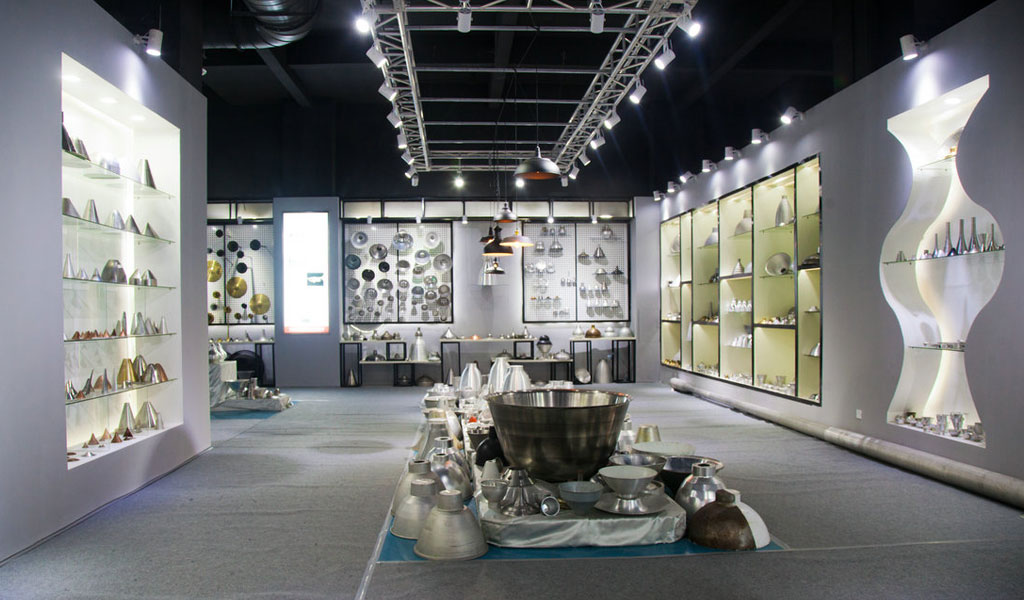
At BE-CU China Metal Spinning company, we make the most of our equipment while monitoring signs of excess wear and stress. In addition, we look into newer, modern equipment and invest in those that can support or increase our manufacturing capabilities. Our team is very mindful of our machines and tools, so we also routinely maintain them to ensure they don’t negatively impact your part’s quality and productivity.
Talk to us today about making a rapid prototype with our CNC metal spinning service. Get a direct quote by chatting with us here or request a free project review.
BE-CU China CNC Metal Spinning service include : CNC Metal Spinning,Metal Spinning Die,Laser Cutting, Tank Heads Spinning,Metal Hemispheres Spinning,Metal Cones Spinning,Metal Dish-Shaped Spinning,Metal Trumpet Spinning,Metal Venturi Spinning,Aluminum Spinning Products,Stainless Steel Spinning Products,Copper Spinning Products,Brass Spinning Products,Steel Spinning Product,Metal Spinnin LED Reflector,Metal Spinning Pressure Vessel,
